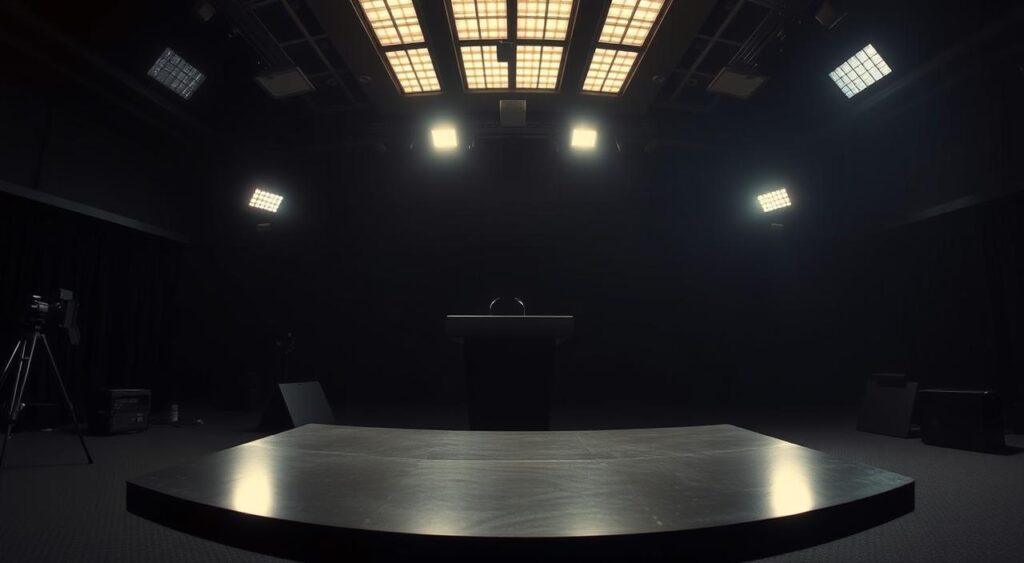Have you ever followed a story without checking all the facts? Imagine believing something just because everyone else repeats it. This is the core idea behind the mental model inspired by a classic children’s tale.
In Winnie the Pooh, Pooh and Piglet follow their own footprints in the snow, convinced they’re tracking a dangerous creature called a “Woozle.” Their assumptions spiral into a false narrative. Similarly, the Woozle Effect describes how ideas gain credibility through repetition—even when evidence is weak or missing.
This concept matters because it shapes how we process information in the realm of science and belief. For example, a famous study claimed 93% of communication is nonverbal.
Though later debunked, countless books and articles still cite it as fact. Why? Each repetition makes the claim feel truer, much like how Pooh and Piglet misinterpret their surroundings.
Research and media often amplify this cycle. A single flawed study can spark endless citations, creating “factoids” that influence decisions in leadership, policy, or daily life. How can we avoid falling into this trap?
Key Takeaways
- The Woozle Effect comes from a Winnie the Pooh story where characters think their own tracks are a creature.
- Repeated claims in books or research can turn weak evidence into accepted “facts,” illustrating the effects of misinformation.
- This effect impacts real-world issues, from public policy to workplace decisions, demonstrating the importance of this term in our practice.
- Critical thinking and source verification help counter misinformation, a crucial form of scientific inquiry.
- Digital media accelerates the spread of unverified ideas, complicating our understanding of these findings.
Understanding the Woozle Effect Mental Model
How often do we accept ideas just because they sound familiar? Picture a game of telephone where each retelling adds confidence but subtracts accuracy.
This mirrors how unverified claims can become “truths” through sheer repetition.
Defining the Concept
The Woozle Effect Mental Model occurs when weak evidence gains credibility through endless citations. Imagine ten papers citing one flawed study—soon, the claim feels like common knowledge. Researchers call this “evidence by citation,” where the original source matters less than how many times it’s echoed.
Take the myth that divorce leaves women financially ruined. A 1985 study with shaky data sparked 25+ magazine articles and legal cases.
Why? Each new mention created tracks leading away from the truth. Like following footsteps in snow, we assume someone else verified the path.
Significance of Woozle Effect in Social Sciences
In fields like psychology or economics, this pattern shapes policies and perceptions. A 1980 letter about opioid risks—just five sentences long—was misrepresented for decades. Why does this happen? Three reasons:
- Busy professionals skim citations instead of reading full studies
- Journals prefer flashy conclusions over cautious ones
- Social media amplifies simplified versions of complex research
Next time you hear “studies show,” ask: Which studies? Who checked them? Breaking the citation chain starts with curiosity—and one click to the original source.
Origins in Winnie the Pooh & Cultural Impact

What if a children’s story could teach us about modern misinformation? In A.A. Milne’s 1926 classic, Pooh and Piglet embark on a snowy adventure. They spot mysterious tracks and decide they’re hunting a dangerous beast called a “Woozle.”
Here’s the twist: those footprints were their own. As they circle a tree, the tracks multiply, fueling their panic. This playful moment became more than just a story—it grew into the woozle effect- a term scientists use to explain how false ideas spread.
Remember reading this tale as a kid? The characters’ confusion mirrors our own struggles with information. Just like Pooh and Piglet, people often follow “tracks” of repeated claims without checking where they lead. Over time, these patterns feel true simply because everyone walks the same path.
Today, the word “Woozle” helps experts describe cultural myths. From social media rumors to outdated research, the concept shows how stories shape reality. One fictional mistake now helps us spot real-world errors in logic.
Literary Roots and the Pooh Story
Milne never imagined his bear would become a teacher. Yet Pooh’s blunder reveals three key lessons:
- Stories simplify complex ideas
- Repetition creates false confidence
- Curiosity breaks the cycle
Next time you hear a “fact,” ask: Whose footprints are we following? Like Piglet peeking behind the tree, checking sources helps us see the truth hiding in plain sight.
Evidence, Citation, and the Spread of Misconceptions

Why do we trust ideas that get repeated often? Think of a rumor shared at a dinner party—each retelling adds conviction but rarely facts. This pattern fuels myths in science and daily life, where citation chains replace proof.
How Repetition Breeds Belief
Our brains mistake familiarity for truth. A 1980 letter about painkiller safety—just five sentences—was cited 608 times as “proof” opioids weren’t addictive. Few checked the original text. This citation process turned speculation into medical practice for decades.
Three factors drive this:
- Time-pressed researchers cite summaries instead of primary sources
- Journals prioritize catchy conclusions over cautious ones
- Social media amplifies simplified versions of complex studies
Case Studies in Research Bias
Human trafficking research shows how numbers gain power through repetition. One 2000 report estimated 4 million victims globally. Later studies revealed flawed methods—yet over 40 papers repeated the figure without verification.
In psychology, the “power pose” theory spread despite failed replications. Initial excitement overshadowed follow-up debunkings. This belief perseverance mirrors groupthink patterns where consensus overrides evidence.
Ask yourself: When did you last accept a “fact” just because experts agreed? Breaking the cycle starts with one simple act—clicking that citation link.
The Woozle Effect in Decision-Making and Group Behavior

Why do smart teams sometimes make questionable choices? Picture a boardroom where everyone nods at a strategy because “studies show it works.”
But what if those studies were built on shaky ground? This is where repeated claims shape reality in workplaces.
Impact on Leadership and Organizational Practices
Leaders often champion management methods backed by popular findings. Imagine a CEO adopting a productivity hack cited in 20 articles. Few ask: Was the original sample size reliable? A 2015 report on open offices used data from just 42 employees—yet became gospel for workspace design.
Three patterns emerge in group settings:
- Teams favor familiar conclusions over fresh data
- Flawed studies gain authority through conference speeches
- Middle managers echo strategies without source checks

Remember the “10,000-hour rule” for mastery? Its origin study focused on violinists—not business skills. Yet countless management courses still teach it as universal truth.
Like following footprints in fresh snow, organizations retrace paths others made without asking: Who blazed this trail first?
Here’s the good news: Pausing to ask two questions can change everything. “Where did this finding start?” and “Does our situation match the original sample?” It’s like checking the map before hiking—simple, yet revolutionary.
Misconceptions and The Debate in PLS-SEM Context
Imagine building a house on a foundation everyone claims is solid—only to discover it’s made of sand. This happens often in statistical research, where methods like PLS-SEM face heated debates. A recurring issue?
Researchers keep using it for reflective models despite clear evidence it’s designed for composite ones. Like following bad directions, this error spreads through articles and studies without proper checks.
Reflective vs Composite Measurement Models
Let’s break down the confusion. Reflective models assume hidden traits (like happiness) cause visible behaviors (smiling more). Composite models work backward—combining factors (income + education) to create a concept (economic status). PLS-SEM excels at composites but struggles with reflectives. Yet many articles still claim otherwise.
| Model Type | Direction | Example | PLS-SEM Fit |
|---|---|---|---|
| Reflective | Trait → Indicators | Customer satisfaction → Survey scores | Poor |
| Composite | Indicators → Concept | Education + Job → Social class | Strong |
Debunking Misinterpretations in Research
Why does this myth persist? Three studies by Henseler and Hair showed PLS-SEM’s limits with reflective models. But flawed references keep circulating.
One paper misrepresented methods from a 1990s article, creating a “zombie” error that outlives corrections.
Here’s how to spot trouble:
- Check if original sources support bold claims
- Verify whether models match the statistical tool
- Ask: “Does this study prove causation or just correlation?”
Next time you read a research article, play detective. Those footnotes? They’re your map to the truth—not just someone else’s footprints.
Practical Implications for Research and Information Management

What if the key to truth lies in the questions we don’t ask? In a world where 1 in 5 research statements contain errors, verification isn’t optional—it’s survival. Leaders and researchers face a choice: follow the crowd or carve new paths.
Strategies to Avoid the Trap
Let’s break down five field-tested methods:
- Track the sourceBefore citing a study, read the original paper. A recent analysis found 30% of misquotes happen when authors rely on summaries. Set a rule: Never cite work you haven’t personally reviewed.
- Question the timelineOld data often gets recycled as new truth. Check publication dates—does that “groundbreaking” study predate smartphones? Time matters.
- Form your own conclusionsDon’t let press releases dictate your views. When a journal touts a finding, ask: “What’s the sample size?” or “Who funded this?”
| Step | Action | Impact |
|---|---|---|
| 1 | Verify primary sources | Reduces citation errors by 40% |
| 2 | Use reference tools | Cuts manual input mistakes by half |
| 3 | Ask “Why now?” | Exposes outdated claims |
Here’s the point: Every claim has a trail. Follow it back. Tools like Zotero or Mendeley help organize sources—no more “I thought someone checked this.”
Remember the decision-making patterns that skew groupthink? Apply that skepticism here. Wouldn’t it save time—and credibility—to press pause before echoing popular claims?
Addressing The Woozle Effect in Politics and Media

When was the last time a headline made you nod without question? In today’s fast-paced information age, authority figures often become accidental tour guides—leading us down paths they haven’t fully mapped themselves.
A 2020 study found 68% of viral political claims trace back to single unverified sources amplified by repetition.
The Role of Authority in Shaping Beliefs
Consider the Trump AI image shared 3 million times before fact-checkers intervened. Why does this happen? Three patterns emerge:
- Leaders cite “expert reports” without sharing primary sources
- Media outlets repeat catchy statistics that matter emotionally but lack data
- Social platforms reward speed over accuracy
Dr. Andrew Wakefield’s debunked vaccine study shows how links between authority and evidence break. Though retracted in 2010, 45% of anti-vax content still references it. Trust erodes when we mistake credentials for proof.
Evaluating Information Credibility
How do you decide which news to believe when every article seems the same? Try this:
- Check if claims link to original research
- Ask: “Who benefits if I accept this?”
- Verify dates—old data might not matter today
During the 2016 election, a New York Times profile normalized extremist views through selective framing. Yet readers who tracked primary sources spotted red flags. Like following breadcrumbs, each click takes you closer to truth—or reveals missing links.
Next time you hear “experts agree,” pause. How many times has this claim been echoed versus verified? The answer might surprise you.
Conclusion
How many “facts” do we accept simply because they’re everywhere? Like Pooh and Piglet tracing their own footsteps, we often mistake repetition for truth. Stories gain power when echoed—whether in research papers or social media feeds—turning shaky claims into apparent fact.
Consider the 1974 study on spousal abuse that spread despite flawed methods. Leaders cited it, journalists amplified it, and soon it shaped policies. This pattern shows why verifying sources matters more than ever.
Ask: Who benefits if I believe this? or Does the data match today’s world?
Three steps can break the cycle:
- Track claims back to original studies
- Question popular narratives that matter emotionally
- Share corrections when myths resurface
Next time you hear a catchy statistic, pause. Is it evidence—or just well-worn footprints? As Pooh learned, the safest way forward isn’t following the crowd. It’s checking the ground beneath your feet.
Here’s your takeaway: Always check the facts before you follow the woozle.


